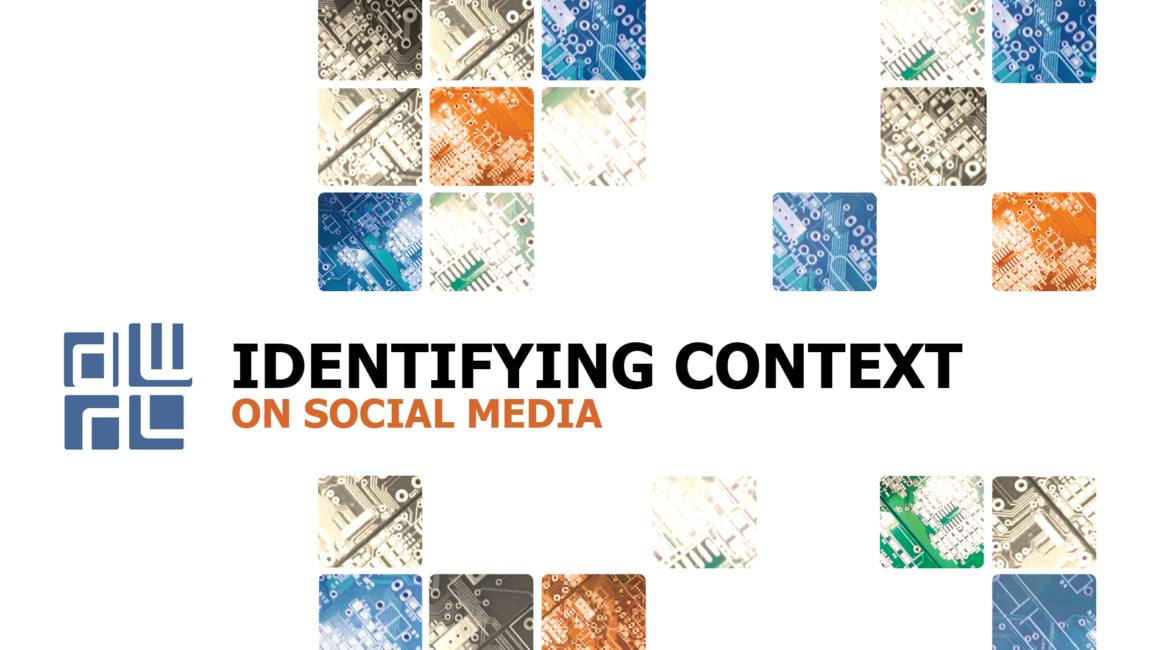Increasingly we depend on social media and online publications for access to news and information that affects our lives and informs our decisions. With the speed of circulation and the everydayness of digital mediation, critical engagement with contextual elements of online environments is paramount to current rhetorical education.
This lesson plan asks students to compare the purpose, audience, and contextual elements of two online venues: a social media platform on which a news article is posted and the media website from which it was produced.
Learning Objectives
The principal objective of this lesson plan is to have students critically engage with social media and news circulation. Not only will students learn important media and digital literacy skills, they will also employ rhetorical concepts in order to improve their analytical and writing practices.
- Students will learn to do the following:
- Analyze the purpose, audience, and context for social media.
- Compare significant differences between digital (con)texts.
- Critically engage with digital media and circulation.
Assignment Length
This lesson plan requires one class period and additional time outside of class for students to write their analyses.
Required Materials
Students will need access to a computer and an internet connection.
Skills Necessary
Instructors and students will want to be familiar with the rhetorical concepts of audience, purpose, and context.
Access and Adaptability
This assignment requires access to a computer with an internet connection.
Preferably, this lesson plan would be taught a digital classroom with computer access for all students. However, if the class is in a non-computer classroom, instructors might request students who own laptops to bring them to class and work collaboratively in groups.
Assignment Description
For this assignment students will write a 500 word comparative analysis of two online venues.
First, students will select a social media platform that shares and circulates news articles (Reddit, Twitter, Facebook, etc.). They will identify key elements about the platform’s (1) purpose by surveying its front page, menu options, and “About” page; (2) audience by examining its advertising demographics, community guidelines, and terms of service; and (3) context by researching Wikipedia for its history, community, and references.
Second, students will select a news article circulated on that platform, similarly identifying elements of purpose, audience, and context for the media website from which the article originated.
Third, students will analyze significant differences between the social media platform and the media website, comparing their respective purpose, audience, and context.
Instructor Preparation
- Introduce the rhetorical concepts of purpose, audience, and context.” Familiarize yourself with the skills workshop video.
- Practice navigating through the contextual elements on social media platforms.
Student Preparation
- Students should be given the writing assignment prompt at the beginning of the lesson.
- Students will need to choose a social media platform to analyze.
In-Class or Assignment Instructions
- Introduce the prompt and answer student questions.
- Watch the skills workshop video, or have the instructor demonstrate how to find contextual elements.
- Have students practice identifying contextual elements on their own or in groups.Have students practice identifying contextual elements on their own or in groups.
Skills Workshop
Assessment Suggestions
Instructors may decide to assess this assignment as a stand-alone project or as a step toward a larger project in which students continue to work with their comparative analyses. For example, having students compare comment sections in relation to each venue, or analyze the news article in relation to each venue.
For portfolio-based and Learning Record assessment, instructors may want to provide feedback and allow for revision. Instructors may also want to assign a short refection to students, having them address both the drafting and revision processes.
For traditional assessment, instructors may want to use a three-point scale for grading. A three would meet the requirements of the prompt and demonstrate a strong engagement with analysis. A two would meet most of the requirements but fall short in length or focus more on most but not all contextual elements. A one would fall short in length and other features of analysis.
If this is a scaffolded assignment that leads to a larger analysis paper, it is highly recommended that instructors provide discursive feedback for improvement.


